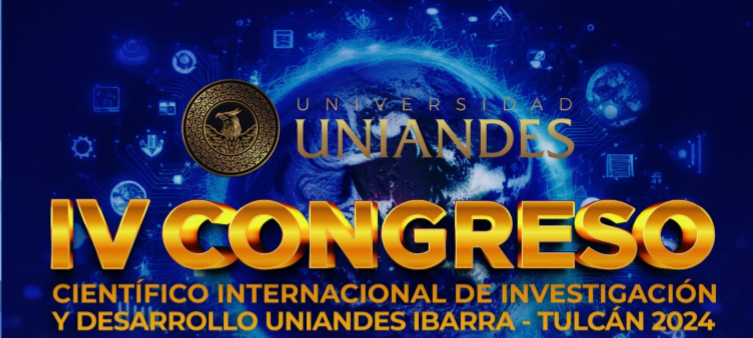Procalcitonin as a marker for early diagnosis of neonatal sepsis
Abstract
Introduction: Septicemia is an infectious disease produced by the proliferation of pathogenic microorganisms in the bloodstream that causes a systemic inflammatory reaction; it can affect the entire population in general, but mainly newborns and it is called "Neonatal Sepsis". In Ecuador, neonatal sepsis is the third leading cause of mortality for newborns.
Objective: To describe the current status of the use of procalcitonin as a marker for early diagnosis of neonatal sepsis.
Method: A cross-sectional descriptive observational study was carried out with a retrospective approach, through a literature review and information obtained from different databases such as: PubMed, Medline and SciELO, using the Boolean operators "AND"," OR" and "NOT".
Development: The immune system of newborns is not developed, so if exposed to maternal or environmental contagion factors, the risk of contracting the disease increases. For its early diagnosis, the Gold Standard test is the blood culture; however, its disadvantages are recognized as it is a relatively invasive intervention and a longer time is required to obtain the results, compared to procalcitonin which has favorable features such as its high sensitivity, the speed in obtaining results and its ability to differentiate between bacterial and viral sepsis.
Conclusions: Procalcitonin constitutes a reliable biomarker for early detection of neonatal sepsis.
Keywords: early neonatal sepsis, procalcitonin, blood culture
Downloads
References
Ramírez JF, Borgua A, Vázquez A. Sepsis. Med Int Méx .2014; 30:159-175.
Yadav P, Kumar Yadav S. Progress in Diagnosis and Treatment of Neonatal Sepsis: A Review Article. JNMA J Nepal Med Assoc. 2022 Mar [citado 13/11/24];60(247):318–324. Disponible en:
https://pmc.ncbi.nlm.nih.gov/articles/PMC9226748/pdf/JNMA-60-247-318.pdf
Coronell W, Pérez C, Guerrero C, Bustamante H. Sepsis neonatal Rev. de Enfermedades Infecciosas en Pediatría. 2010;6–23.
Carrillo R, Peña C, García J.SEPSIS DE LAS BASES MOLECULARES A LA CAMPAÑA PARA INCREMENTAR LA SUPERVIVENCIA [Internet].México: Academia Nacional de Medicina de México; 2015.
Tapia Z, Dayana I. Importancia del diagnóstico de sepsis en el laboratorio clínico. [Tesis]Ecuador: Universidad Técnica de Ambato; 2024.
Alonso Renato LN, Flores Gallegos LJ. "Utilidad de biomarcadores y hemograma completo en el diagnóstico de sepsis neonatal precoz en recién nacidos a término, del servicio de neonatología del Hospital III Yanahuara EsSalud Arequipa, 2023." [Tesis]Peru:Universidad Católica de Santa María;2024.Disponible en:
Organización Mundial de la Salud. Mejorar la supervivencia y el bienestar de los recién nacidos; 2020.[citado 14/11/2023]Disponible en:
https://www.who.int/es/news-room/fact-sheets/detail/newborns-reducing-mortality
Fleischmann-Struzek C, Goldfarb DM, Schlattmann P, Schlapbach LJ, Reinhart K, Kissoon N. The global burden of paediatric and neonatal sepsis: a systematic review. Lancet Respir Med. 2018;6(3):223-230.
Almudeer AH, Alibrahim MA, Gosadi IM. Epidemiology and risk factors associated with early onset neonatal sepsis in the south of KSA. J Taibah Univ Med Sci. 2020;15(6):509-514.
Dávila Aliaga C, Hinojosa Pérez R, Mendoza Ibáñez E, Gómez Galiano W, Espinoza Vivas Y, Torres Marcos E, et al. Prevención, diagnóstico y tratamiento de la sepsis neonatal: Guía de práctica clínica basada en evidencias del Instituto Nacional Materno Perinatal del Perú. Anales de la Facultad de Medicina. 2020; 81(3):354–64.
Organización Panamericana de la Salud. Resumen: panorama regional y perfiles de país. Washington, D.C.: OPS; 2017
Instituto Nacional de Estadísticas y Censos del Ecuador (INEC) Registro Estadístico de Camas y Egresos Hospitalarios. Boletín técnico N°-01-2019-ECEH; 2018.
Cortes J, Fernández L, Beltrán E, Narváez C, Fonseca C. Sepsis neonatal: aspectos fisiopatológicos y biomarcadores. MÉD.UIS.2019;32(3):35-47.
Locheo M, Pérez G, Pérez J, Ramírez J, Troyo R. Procalcitonina como marcador en el diagnóstico de sepsis neonatal. Rev. Médica del Instituto Mexicano del Seguro Social. 2008; 46 (6): 597-602.
López U, Oscar J, Buriticá H, Héctor M. Letalidad por sepsis neonatal, factores de riesgo y características microbiológicas. Andes Pediátrica 2021; 92(5): 690-698.
Kelly Angulo A. Validez de la procalcitonina en el diagnóstico de la sepsis neonatal precoz en el hospital José Agurto Tello de Chosica.[Tesis] Peru:Universidad Privada San Juan Bautista; 2018.
Martínez A, Arduz Eguino E, Calderón M. Sensibilidad y Especificidad de la Procalcitonina y Tinción de Gram de Buffy Coat para el Diagnóstico Temprano de Sepsis en Pacientes Pediátricos. Gac Med Bol. 2011; 34 (1): 20-24.
Ramírez V, Pérez J, González L, Cortez P. Procalcitonina como marcador en el diagnóstico de sepsis neonatal. Rev. Médica del Instituto Mexicano del Seguro Social [Internet]. 2008 [citado 1 /01/ 2024];46(6):597–602. Disponible en: https://www.redalyc.org/pdf/4577/457745524004.pdf
Copiz GI, Izquierdo G, García P, Aravena M, Delpiano L, Reyes A, et al. Hemocultivos en recién nacidos: optimizando la toma de muestra y su rendimiento. Rev. chil. infectol. 2018[citado 1 /01/ 2024];50(1):260–9. Disponible en:
https://scielo.conicyt.cl/pdf/rci/v35n2/0716-1018-rci-35-02-0117.pdf
Published
How to Cite
Issue
Section
License
ACCESS AND DISTRIBUTION POLICY
All published articles are open access contributions, which are distributed under the terms of the Creative Commons Attribution-NonCommercial 4.0 License which permits unrestricted non-commercial use, distribution and reproduction in any medium, provided that the primary source of publication is properly cited.




